‘Bears’ director Alastair Fothergill reveals their true nature
By Alexandra Heilbron on August 8, 2014 | Leave a Comment
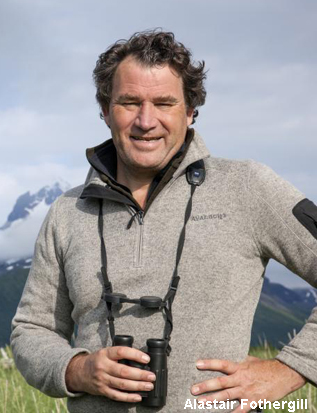 Disneynature’s gorgeously-filmed and fascinating movie Bears releases on DVD next week. Tribute found out from co-director Alastair Fothergill what it was like to film and live so close to these beautiful brown bears for two years in Alaska.
Disneynature’s gorgeously-filmed and fascinating movie Bears releases on DVD next week. Tribute found out from co-director Alastair Fothergill what it was like to film and live so close to these beautiful brown bears for two years in Alaska.
I love the close-up look this movie offers of these beautiful animals. What inspired you to make a film about these bears?
These are movies, they’re not documentaries and so they have to have really strong stories and emotionally engaging characters. We always felt the bears had that potential, we don’t have teddy bears for no reason. Since we were tiny we’ve been attracted to bears and bear cubs are terribly, terribly engaging characters. At the same time, they live in a beautiful wild place – Alaska – and it was very important to us to try and transport people to a place where many of them would never go. Also, these movies have to have a real engaging narrative. Bear mothers have a real challenge because 50 per cent of their cubs die in the first year and we knew that was a really strong story. We thought, great characters, beautiful locations and engaging story, the first year of the life of a mother of newborn cubs.
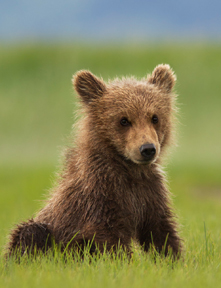 Before filming did you study bears in order to know how to get close to them?
Before filming did you study bears in order to know how to get close to them?
We are pretty experienced in that nature generally, but Adam Chapman, the co-director on this movie, has done a number of TV shows on bears before so he was a real expert. Also, we worked with very experienced people in a place called Hallo Bay in Katmai National Park, where there is a very small operation of guys that for over 30 years having taken very small numbers of tourists out with these bears. They know these bears as individuals, they live around bears and we took their advice. We never had a cameraman or woman in the field without one of their team with us. The bears are not dangerous at all. One of the important things about the film was to smash that myth if we could. At the same time you have to know how to behave well around bears and with their help, we never had any trouble at all actually, we got very, very close to them actually, as you might see in the final shots.
I did see that, it was amazing. It was just so incredible to see how close you got to the bears.
That was one reason we put the shots in the credits because you know, they are I think, badly named grizzly bears, we like to call them brown bears and they’re not grisly animals. The number of times people have difficult encounters with grizzly bears are very very very small. Polar bears by contrast, do like to eat people. Not many of them do, but you know in Canada, it’s an issue. The amount of bad experiences people have with brown bears you can count on one hand.
Did the bears know you were there and did it change their behavior in any way?
They absolutely know you’re there but no, not at all. These are the bears that meet relatively few people, they are not hunted in the national park, they have no reason to fear people. You could call them naive. We are very very careful, we never got more than about 10 meters. The bears might come closer than that to us but we would never approach them closer than that. We would never get between a mother and cub, we never eat in front of them. We were very careful to keep our food always sealed away. We did a lot of things you would naturally do to not interfere with them because we wanted to film natural behavior and to be honest with you they might be a little inquisitive for five or six minutes but we were just sitting there doing nothing and they got bored with us really quickly. They just got on with the business of trying to find food.
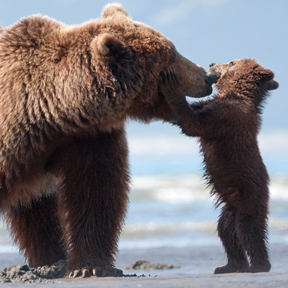 Logistically how hard was it to follow the same bears for an entire season?
Logistically how hard was it to follow the same bears for an entire season?
That was probably the key challenge. We did it over two seasons actually. It was really helpful that the guides knew the bears very very well and recognized individuals and could help us with that. They always said “If you don’t like weather in Alaska, don’t worry it’ll change in five minutes” and the weather really does change there a lot. It’s a very remote place, you can only get in by light plane, there are no vehicles there, you have to carry your cameras. For the cameramen and women that worked on the movie, it was a pretty grueling job but such a wonderful place and the animals are so engaging that it completely made up for it.
Where did the team live while filming?
In Hallo Bay there was a lodge, with a cookhouse and we stayed there a lot and they gave us support. Also, we were more remote than that, in tents. Around our little campsite we had a little tiny electric fence not to protect us, but just to make sure the bears didn’t get anywhere near our food. Bears have got very good noses, they love a lot of human food. Bears like honey (laughs). So you have to be very careful not to give them food. Whenever people have problems with bears it’s almost where people leave food around.
How did you schedule breaks during filming?
The bears all go into hibernation during winter. It’s not true hibernation but they all go into their dens from October to March. There’s the six months we couldn’t film them at all. We were editing in that period and the three directors on the movie were working together and about six or seven camera men and women. We tended to give them six to eight week filming trips because after about eight weeks in a tent, working that hard you get pretty exhausted. As soon as one lot were finished, another lot came in. We had a bigger camera crew on Bears than on previous movies. We wanted to keep filming as much as we possibly could.
The wolf who wanted to eat the baby bears seemed to otherwise live quite peacefully around the bears, is that common?
That was a complete revelation for all of us. The field guides who’ve been working there for 25 years have seen occasional wolves but they’d never seen the amount of interaction between wolves and bears that we managed to film. The wolf was not actually in our original script, we didn’t expect to film anything other than bears in the woods, so that was wonderful. The bottom line is, wolves are sort of a different threat, they’re sneaky! They will take a bear cub, which is why he was constantly looking around for an opportunity. There’s no way a wolf could take on a mother. A mother bear could easily kill a wolf.
What is your next project?
We are now working on a movie for the next Earth Day, it’s called Monkey Kingdom and it’s about these amazing monkeys that live in Sri Lanka. It’s a very funny movie, very different from Bears. That’s the story of Disneynature, every year it’s something different.
Bears releases on Blu-ray and DVD on Tuesday, August 12. ~Alexandra Heilbron
Comments & Discussion
Similar Articles
Netflix’s Our Planet filmmakers on their new wildlife series
April 4, 2019 | Leave a Comment
With Netflix’s new original documentary series releasing Friday, we talked to filmmakers Adam Chapman and Keith Scholey on how they are hopeful for the future.
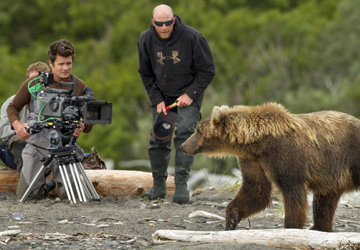
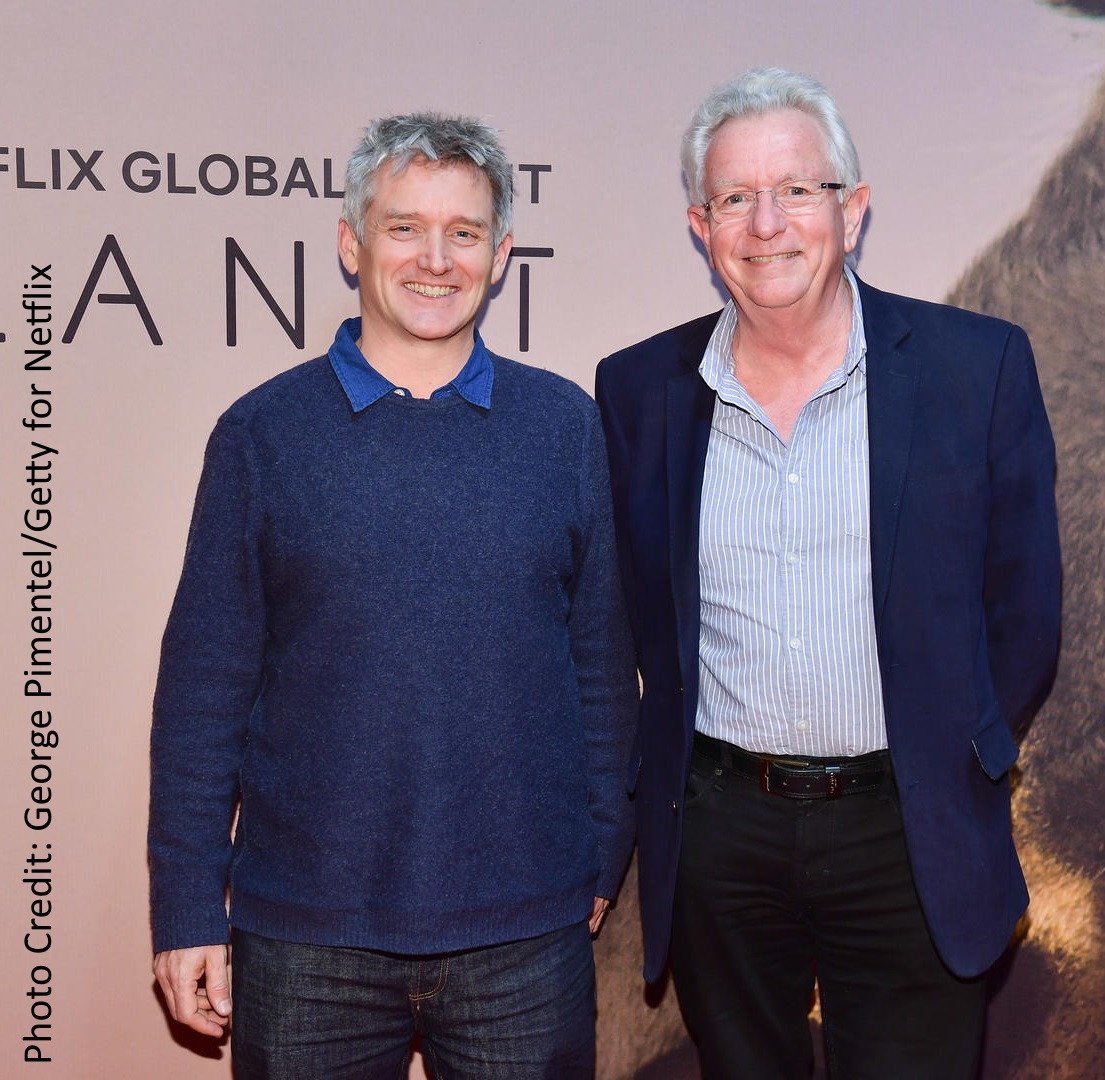
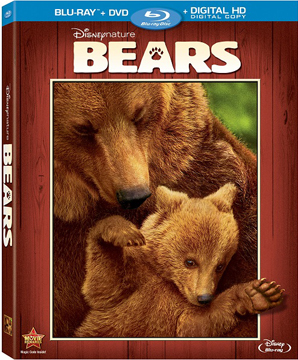
There are no comments yet, why not be the first?